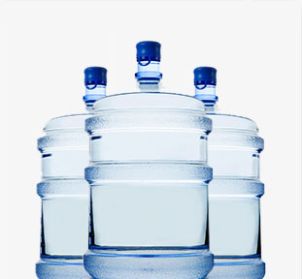
Pumping iron?

Is your water pumping iron?
Are your fixtures and surfaces Feeling the efFects of Fe?
If your home or business is dealing with high levels of iron in its water supply, the byproduct of contamination can be far-reaching and should be dealt with quickly and thoroughly.
What is it?
Fe, better known as iron for those who forgot high school chemistry as quickly as they learned it, is in anything but short supply. As an element, it is actually the fourth most abundant resource on earth and can be found in sediment, soil and water. Iron conjures up two distinct associations for most people: metal and meat. Most people would be mostly correct.
For the metal heads: iron ore can be “smelted” and used to create objects like horseshoes.
For the meatheads: iron is also essential for a healthy diet and is needed to transport oxygen in the bloodstream. When it comes to H2O, “[m]ost tap water in the United States supplies approximately 5 percent of the dietary requirement for iron,” according to the Illinois Department of Public Health.
Weirdly enough, the iron problems in private well water draw stronger parallels to horseshoes than horseradish.
Why is it a problem?
Iron in water is largely considered an aesthetic contaminant. The Minnesota Department of Public Health points out that the “chemical form of the iron found in water is not readily absorbed by the body.” Yet, high levels of iron can be the source of many headaches in the home, including:
The water can taste metallic. The water itself is a rusty red or yellowish color. The water leaves rust stains on porcelain and other surfaces. Left untreated, clogs and blockages can form in plumbing fixtures.
Most of these issues are caused by iron’s love affair with oxygen. When Fe meets O in the soil, iron bacteria may be born, and no one is happy to see pictures of that baby. Don’t look for any storks when it comes to iron bacteria either, instead, keep an eye on the weather.
How did it get in my private well water?
Blame the rain.
Rainwater is the most common way iron finds itself in underground aquifers, which in turn supply groundwater sources, which in turn supply private wells. Since iron is a naturally occurring element, it can also find its way into creeks, rivers and lakes without the help of a thunderstorm or two.
Got questions about your water?
Say “Hey Culligan Man!”
Related Articles
FAQ: Are There PFAS in Bottled Water?
8 min read
What is PFAS Water Testing?
11 min read
Find A Location Near Me

Schedule Your Free
In-Home Water Test
Get better water in your home by scheduling an appointment with your local Culligan Water Expert.
Discover More
See All Articles

FAQ: Are There PFAS in Bottled Water? — qa-testing
Although drinking water quality has always been important, it’s a particularly hot topic these days — especially as researchers learn more about PFAS, sometimes called “forever chemicals.” These substances have […]
7 min read

Explore

Explore
Our Products

Water Softeners
With any of our soft water systems, get more out of your water-using appliances while spending less on energy and detergent.
View Products

Water Delivery
There’s never been a better time to enjoy the convenience of scheduled bottled water deliveries from the Culligan® Water Experts
View Products

Water Filtration Systems
Culligan's water filtration systems have improved water quality for thousands of families worldwide.
View Products